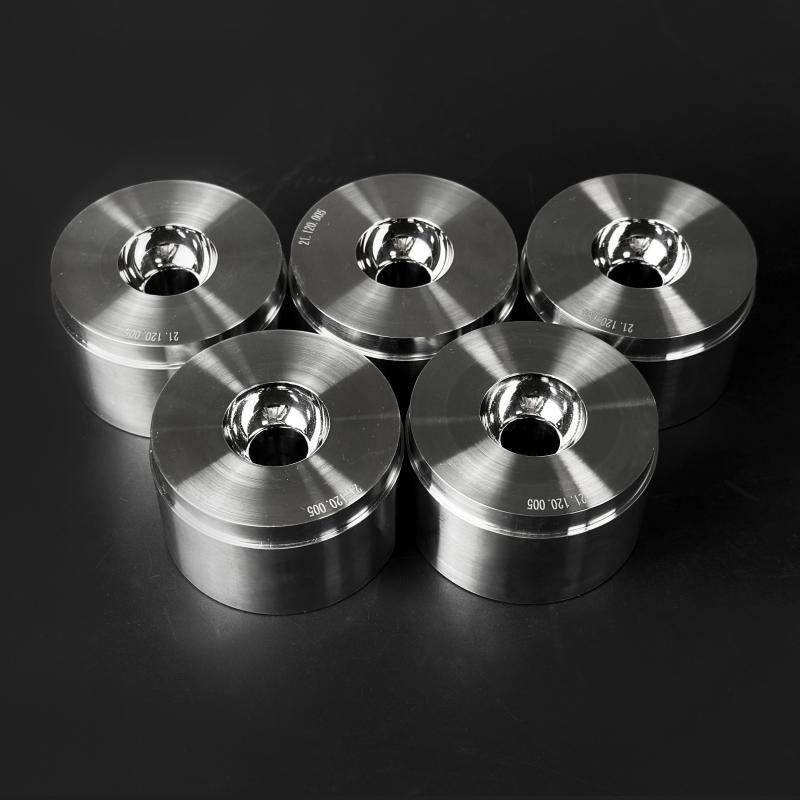What are Main Dies?
Main Dies, also known as primary dies or master dies, are precision tools used in manufacturing processes to shape, cut, or form materials into specific configurations. These dies serve as the foundational tooling components in various industrial applications, particularly in metalworking, plastic injection molding, and extrusion processes.
Key characteristics of Main Dies include:
Hardness: Typically made from tool steel with hardness ranging from 58-64 HRC (Rockwell C scale) to withstand high-pressure operations
Precision: Manufactured with tolerances as tight as ±0.005 mm for critical applications
Durability: Designed for 500,000 to 2,000,000 cycles depending on material and application
Surface finish: Critical surfaces often polished to 0.2-0.4 μm Ra (roughness average)
Thermal stability: Maintain dimensional stability at operating temperatures up to 300°C (572°F)

Applications of Main Dies
Main dies find extensive use across multiple industries due to their precision and durability:
1. Automotive Manufacturing
In the automotive sector, main dies are crucial for producing body panels, chassis components, and engine parts. Progressive dies can achieve production rates of 20-60 strokes per minute for high-volume parts like door panels or fenders. The dies must withstand forces up to 2,500 tons in large stamping operations.
2. Aerospace Components
Aerospace applications require dies with exceptional precision for titanium and aluminum alloy parts. Forging dies for turbine blades operate at temperatures exceeding 900°C (1,652°F) and must maintain dimensional accuracy within 0.127 mm (0.005 inches) throughout their service life.
3. Electronics Manufacturing
Precision dies produce connectors and micro-components with features as small as 0.1 mm. Fine blanking dies achieve edge quality with a shear zone of 85-100% of material thickness, critical for electrical contacts requiring minimal burr formation.
4. Medical Device Production
Medical device dies manufacture implants and surgical instruments from biocompatible materials. Swiss-type screw machine dies maintain tolerances of ±0.005 mm for critical diameter dimensions on bone screws and dental implants.
5. Consumer Goods
Injection molding dies for plastic products operate with cycle times as fast as 5-15 seconds for high-volume items. Multi-cavity dies can simultaneously produce 32-128 identical parts with weight variations less than 0.5%.
Maintenance Procedures for Main Dies
Proper maintenance is essential to extend die life and maintain product quality. Follow these best practices:
1. Cleaning Procedures
Clean dies after every production run using specialized solvents (pH 7-9) to remove residues without damaging surfaces
For plastic injection molds, use ultrasonic cleaning every 50,000 cycles for intricate cavities
Stamping dies require daily brush cleaning with non-metallic bristles to prevent scoring
2. Lubrication Practices
Apply high-temperature die lubricants (viscosity 80-120 SUS at 100°F) before each production run
Guide posts and bushings require grease with NLGI #2 consistency and EP additives
For aluminum stamping, use water-based lubricants with 10-15% synthetic ester content
3. Inspection Protocols
Perform dimensional checks using CMM (Coordinate Measuring Machine) every 10,000 cycles
Monitor edge wear with optical comparators; replace when radius exceeds 0.05 mm
Check for micro-cracks using dye penetrant testing monthly for critical dies
4. Storage Requirements
Store dies in climate-controlled environments (20-25°C, 40-50% RH) to prevent corrosion
Apply volatile corrosion inhibitor (VCI) coatings for long-term storage
Support large dies at 3-4 points to prevent distortion during storage
5. Repair Techniques
Use micro-welding with 0.3-0.8 mm diameter wire for edge repairs
Laser cladding can restore surfaces with 0.1-0.3 mm material deposition
For severe damage, consider EDM (Electrical Discharge Machining) recutting of critical profiles
Advanced Maintenance Technologies
Modern maintenance approaches incorporate cutting-edge technologies:
Predictive maintenance: Vibration sensors monitor die conditions with FFT analysis detecting abnormalities at frequencies above 5 kHz
Thermal imaging: Infrared cameras detect hot spots indicating excessive friction (temperatures >15°C above baseline)
Digital twins: Virtual models simulate wear patterns, predicting remaining useful life within 5% accuracy
Automated polishing: CNC-controlled systems maintain surface finish to within 0.05 μm Ra variation











